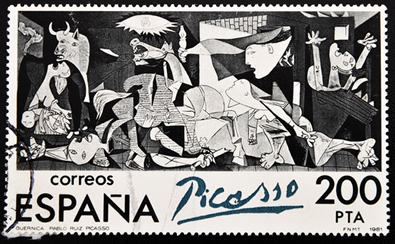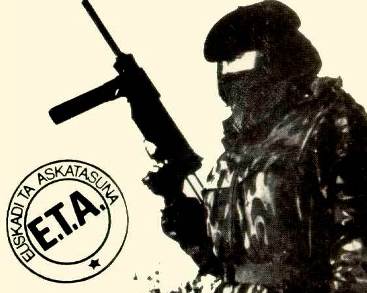The main existing image about the horrors of Spanish Civil War (1936-1939) is the picture Guernica, painted by Pablo Picasso in 1937. The artistic production of the Spanish painter caused a commotion in international public opinion by portraying the military actions unleashed by the forces of General Franco against the populations that inhabited the Spanish territory, in particular the intense bombing carried out on the town of Guernica, which occurred in the same year of production of the work of the painter.

The work Guernica, by Pablo Picasso, portrays the horrors of the Spanish Civil War. *
Guernica was a village of about 6,000 inhabitants located in the northern region of Spain, in one of the provinces of the Basque Country. During the Middle Ages, the village was known for being a meeting place for the General Boards, the political council of Biscay, and for being there after the oath of the Spanish monarchs of respect for the Basque Forums, the set of laws that regulated and guaranteed the rights and customs of this people.
Franco's choice to bomb the small village may be related to this symbolic dimension that it carries, since in this way the Spanish dictator could humiliate the Basques who had signed, in October 1936, an autonomy treaty with the Spanish Republican Government, which Franco had declared war.
The bombing and strafing of defenseless civilians took place on April 26, 1937, and possibly Franco did not expect it to cause public commotion. international, as it did not have the presence of the war correspondents who covered the Spanish conflict on the same night as the bombing. The news quickly spread to newspapers around the world.
Do not stop now... There's more after the advertising ;)
It was from this disclosure that Pablo Picasso had the idea to portray the attack. Based in France, the painter had received a request from the Spanish republican government to produce a painting that would compose the Spanish pavilion at the Paris International Exhibition of 1937. As the objective was also to make propaganda against the Franco insurrection, the painter's shock with the images conveyed by the newspapers of the debris caused by the bombing of Guernica led him to produce his best-known work in just over a month.
The 3.49 meter high by 7.76 meter long panel exposed to the public the horrors caused by the bombing of Luftwaffe (German air force) planes on the population of Guernica. Allied with General Franco, the German military turned the attack on the village into a testing ground for subsequent aerial actions against Allied enemies. The more than 300 kilos of bombs served to humiliate the Basques, train the German military and provide the idea for the production of one of the best known paintings of the 20th century.
* Image credits: nephthali and Shutterstock.com
By Tales Pinto
Graduated in History
Would you like to reference this text in a school or academic work? Look:
PINTO, Tales of the Saints. "Guernica, the story of a work"; Brazil School. Available in: https://brasilescola.uol.com.br/historiag/guernica-historia-uma-obra.htm. Accessed on June 27, 2021.
General history

United Nations, UN, contemporary world, Yalta Conference, San Conference Francisco, Security Council, UNESCO, FAO, ILO, UNICEF, IMF, Security Council, Iraq War, Ban Ki-Moon.



